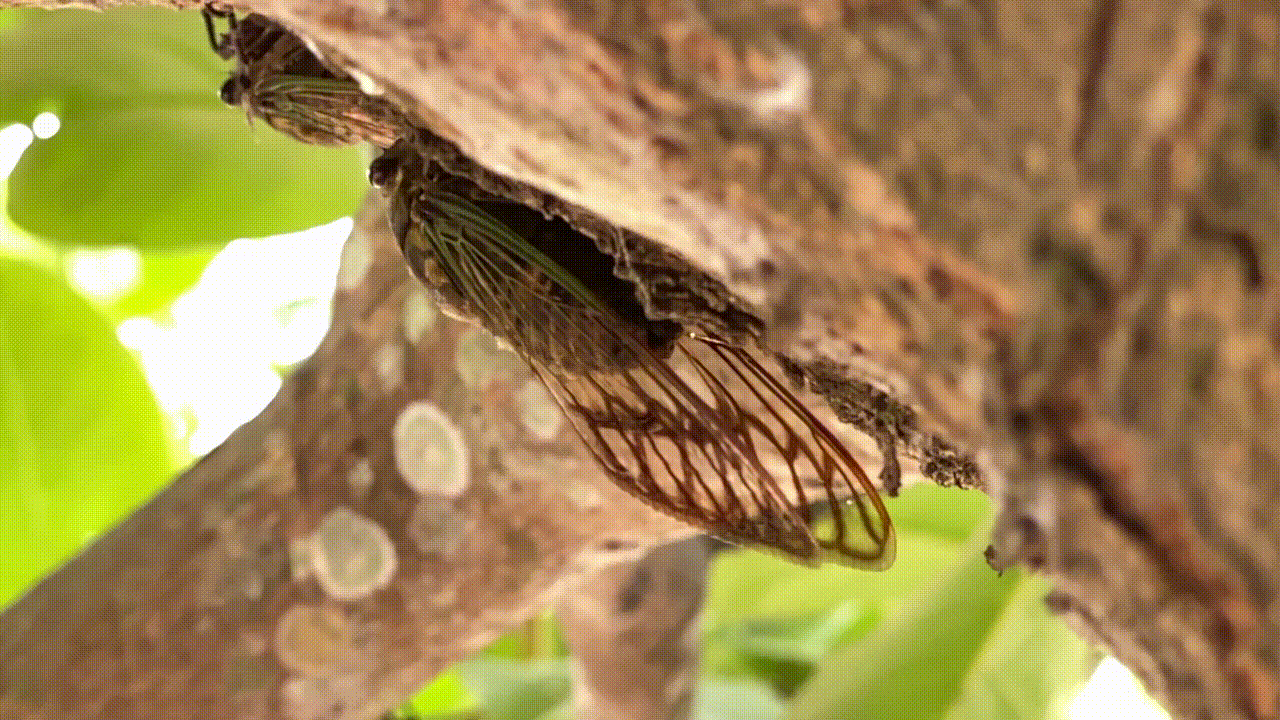Bugs
See 15 Winning Images From the Wildlife Photographer of the Year Contest
Breathtaking shots shine a light on the wonders of wildlife and the threats that human activities pose to the natural world
New Hampshire Resident Dies From Rare but Serious Mosquito-Borne Illness
It's one of four cases of Eastern equine encephalitis reported in the U.S. so far this year—and the state's first since 2014
See Ten Creepy-Crawly Portraits From the Insect Week Photography Contest
The Royal Entomological Society’s Photography Competition highlights the wonder and diversity of the six-legged creatures that crawl, swim and fly across the planet
Singapore Approves 16 Insect Species for Human Consumption
The move comes amid broader efforts to improve food security and diversify food sources
Honeybees Can Sniff Out Lung Cancer, Scientists Suggest
New research opens the door for doctors to one day use bees as a living diagnostic tool
These Stunning Butterflies Flew 2,600 Miles Across the Atlantic Ocean Without Stopping
Researchers combined several lines of evidence to solve the mystery of why a group of painted ladies, which do not live in South America, were found fluttering on a beach in French Guiana
People Are Spotting Rare, Blue-Eyed Cicadas Around Illinois
As two broods of periodical cicadas emerge across the U.S. this spring, people have discovered a few of the bugs that don’t have their trademark red eyes
Did Body Lice Spread Bubonic Plague? Research Suggests the Parasites Are Better Vectors Than Thought
These blood-sucking insects are capable of transmitting the bacteria that caused the Black Death, according to a laboratory study
DNA Reveals How German Cockroaches Came to Dominate the World
A new paper looks at the genes of the most common cockroach species, tracing its historical journey alongside humans, from Asia to the Middle East, Europe and beyond
These Funky Spiders Are Lurking by the Water
Some make nests inside seashells, while others tote bubbles of air on their backs
From Dinner Parties to Restaurants, Cicadas Are Landing in the Kitchen
Professional and amateur chefs nationwide are preparing to serve cicada dishes as the rare double brooding begins
Bumblebee Nests May Be Overheating With Rising Global Temperatures, Study Finds
Across various species and regions, bumblebee nests thrive between 82 and 89.6 degrees Fahrenheit—and climate change could make it harder to find habitats in that range
Up to a Trillion Cicadas Could Emerge in the U.S. Later This Spring
Two specific broods will appear together for the first time since 1803
Don't Look Up: Cicadas Produce High-Speed Jets of Urine
The noisy, winged insects produce pee the same way that much larger animals do, according to a new study
See Incredible Insects Up Close With These Creepy-Crawly Photos
Bug out with 15 shots of insects and arachnids of all shapes and sizes from the Smithsonian Magazine Photo Contest
Where Did Butterflies Come From? This Scientist Is On the Case
Akito Kawahara has spent his life devoted to lepidoptera. Now he’s correcting the record on where they first evolved
Monarch Butterflies Wintering in California Are Down 30 Percent From Last Year
The insects' population is slowly rebounding from a historic low in 2020, but they remain in crisis, having declined by more than 95 percent since the 1980s
Why Are Flying Insects 'Attracted' to Lights? Scientists May Finally Have an Answer
Moths and other insects might turn their backs toward the brightest source of light around—which has historically been the sky—to determine which way is up and which is down, according to a new paper
Cicadas Are Coming: Rare 'Dual Emergence' Could Bring One Trillion of the Bugs This Year
The 13-year and 17-year broods that will emerge from underground this spring will be appearing together for the first time in 221 years
The Scientist Using Bugs to Help Solve Murders
At crime scenes around the world, the forensic entomologist Paola Magni is taking her field into uncharted waters
Page 1 of 11
:focal(640x427:641x428)/https://tf-cmsv2-smithsonianmag-media.s3.amazonaws.com/filer_public/10/7f/107fd7a4-4978-4212-835e-c518d4145a7e/john_marriott_wildlife_photographer_of_the_year.jpg)
:focal(3140x2093:3141x2094)/https://tf-cmsv2-smithsonianmag-media.s3.amazonaws.com/filer_public/93/88/9388ea77-b284-47e4-97b6-83cfa256e72a/gettyimages-1927045430.jpg)
:focal(805x775:806x776)/https://tf-cmsv2-smithsonianmag-media.s3.amazonaws.com/filer_public/e6/1e/e61e3382-565f-41fc-a02c-69a0e2045144/2023_over_18_specially_commended_portraits_look-into-my-eyes_damselfly__pete_burford.jpg)
:focal(2560x1707:2561x1708)/https://tf-cmsv2-smithsonianmag-media.s3.amazonaws.com/filer_public/41/db/41dbcd30-594c-4d2a-9ee2-d395fa9d2eb1/gettyimages-500045985.jpg)
:focal(1024x683:1025x684)/https://tf-cmsv2-smithsonianmag-media.s3.amazonaws.com/filer_public/94/10/9410cbf2-768e-4115-8542-924193a2ee66/2048px-honey_bee_apis_mellifera.jpeg)
:focal(2117x1250:2118x1251)/https://tf-cmsv2-smithsonianmag-media.s3.amazonaws.com/filer_public/b0/c3/b0c341da-9979-4fef-8ae7-1865608d7fe4/una_mariposa_cardera_a_punto_de_emprender_el_vuelo_autor_roger_vila.jpg)
:focal(1205x803:1206x804)/https://tf-cmsv2-smithsonianmag-media.s3.amazonaws.com/filer_public/ff/e4/ffe469b4-25c7-47d5-acc2-3b0e6a8e593a/img_0182_c_daniel_le_field_museum.jpg)
:focal(1024x702:1025x703)/https://tf-cmsv2-smithsonianmag-media.s3.amazonaws.com/filer_public/01/05/0105fcbd-0632-4004-8498-929d3bb3e682/2048px-the_plague_of_florence_1348_a_scene_from_boccaccios_decam_wellcome_v0010585.jpg)
:focal(2141x1478:2142x1479)/https://tf-cmsv2-smithsonianmag-media.s3.amazonaws.com/filer_public/e9/d0/e9d0f27c-6f42-4764-bdd3-036702fb6fdb/gettyimages-548129767.jpg)
:focal(800x602:801x603)/https://tf-cmsv2-smithsonianmag-media.s3.amazonaws.com/filer_public/f5/34/f5349c41-3891-45e4-99cc-1e374092bc6e/2pr4119_web.jpg)
:focal(2009x1205:2010x1206)/https://tf-cmsv2-smithsonianmag-media.s3.amazonaws.com/filer_public/dd/4d/dd4d03fd-9124-4ff4-bb60-5ea8da983b66/gettyimages-977198888.jpg)
:focal(512x371:513x372)/https://tf-cmsv2-smithsonianmag-media.s3.amazonaws.com/filer_public/02/45/0245fa01-7ab1-439e-8a12-827d22dbef67/1024px-bombus_monticola02.jpg)
:focal(2567x1711:2568x1712)/https://tf-cmsv2-smithsonianmag-media.s3.amazonaws.com/filer_public/06/d6/06d6edc9-cdfa-4bb9-8caf-afb524852213/gettyimages-1321221953.jpg)

:focal(2596x1693:2597x1694)/https://tf-cmsv2-smithsonianmag-media.s3.amazonaws.com/filer_public/92/a3/92a3eec2-335b-4d8c-8100-e27f3d1b3242/1_-_371e7f94-7d50-4b2c-8c08-0b911bf6ca3e_copy.jpg)
:focal(1133x761:1134x762)/https://tf-cmsv2-smithsonianmag-media.s3.amazonaws.com/filer_public/c2/e6/c2e62a59-37f8-4b30-bf6f-3ddde26c8fa5/mar2024_c03_prologue.jpg)
:focal(2115x1309:2116x1310)/https://tf-cmsv2-smithsonianmag-media.s3.amazonaws.com/filer_public/e1/d2/e1d25e58-318e-4b50-a0d1-edfb2f7da85e/gettyimages-1242116260_1.jpg)
:focal(500x336:501x337)/https://tf-cmsv2-smithsonianmag-media.s3.amazonaws.com/filer_public/36/19/3619a89a-cbc3-422c-8175-51ae4ca4e4dc/back-insect.jpg)
:focal(1024x683:1025x684)/https://tf-cmsv2-smithsonianmag-media.s3.amazonaws.com/filer_public/15/cb/15cb58f4-3e10-4b7d-81f9-d678f4c2f110/3028327979_5504d892e1_k.jpg)
:focal(2250x1693:2251x1694)/https://tf-cmsv2-smithsonianmag-media.s3.amazonaws.com/filer_public/63/15/6315c267-0a48-4ca5-a557-dfb02334f1b3/opener_-_janfeb2024_c06_paolamagniforensics.jpg)